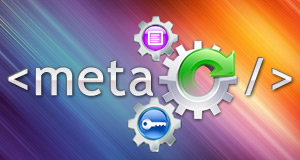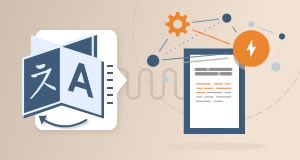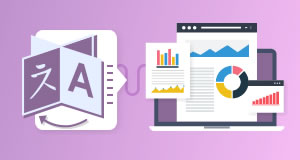
This blog post was updated on 3 July 2023.
Although the vast majority of translation projects go smoothly, there will inevitably be cases where problems occur that result in delays, additional costs, or content that does not meet your requirements.
Translation problems can arise at any stage within a project, but the good news is that most of the time, these problems can be avoided.
This blog post aims to help you do just that, by offering insights into the three most common issues encountered when embarking on translation projects and explaining how to avoid them.

1. Inconsistent use of terminology
If you have specific terminology you want to use throughout your in-language copy, or terms to avoid, the most practical way to communicate these preferences is through a glossary. Glossaries are usually converted into “term bases” for most translation tools, which add a degree of automation and quality assurance by highlighting the term to a translator if the source contains the relevant words.
2. Incorrect use of style
Style is probably one of the most complicated and common feedbacks that a translation vendor handles. A company will usually invest a significant budget deciding on their stylistic preferences, often based on persona research on their target audience, and the look and feel they want their branding to have. Because it says so much about your brand, it is also one of the most important factors to work towards with your vendor and ensure they have what they need to get it right.
Where brand, style, and tone guides are available – whether for your local language, or where possible, your target languages – these should be provided to your translation vendor for reference.
If a style guide is not available, discuss your stylistic preferences, such as formality, tone, date formats, capitalisation, use of English, how to handle abbreviations, and any other brand specifics that translators need to be aware of.
3. Lack of specialist knowledge
Most businesses live with their content day in, day out. It can be easy to overlook some of the complexities of the industry terminology. Additionally, it is possible to have multiple content types within your copy. For example, a power tool company may have marketing materials, technical product sheets, legal content for their terms and conditions, liability, etc. and even medical content.
When sending a new request, it is worth taking the time to outline the document contents. By doing this, your vendor can select and confirm with translators that they can perform the task. If you are going down the sampling route and selecting translators to work on ongoing projects, you may need to choose different translators for different types of content.
Want to learn more?
I hope this blog post has given you a useful introduction to translation problems and how to avoid them. For more in-depth information, read the full-length guide here. The guide covers these 13 common translation problems:
- problems with the source content
- lack of editable source files
- poorly structured files
- lack of instruction
- lack of reference materials
- inconsistent use of terminology
- lack of specialist knowledge
- incorrect use of style
- feedback not implemented in your copy
- poor translation quality
- amendments to source files
- not in the desired format
- incorrect service
Samantha Brazel
Latest posts by Samantha Brazel (see all)
- An introduction to SEO-localisation - March 23, 2023
- 3 tips for achieving high-quality translations - March 21, 2023
- 3 tips to make website translation more efficient - May 18, 2022





